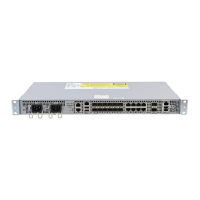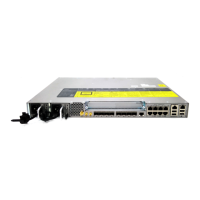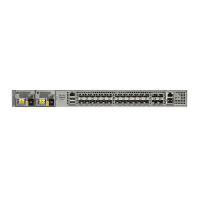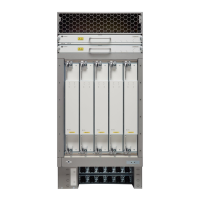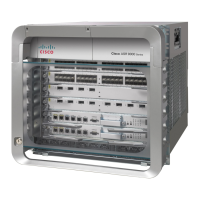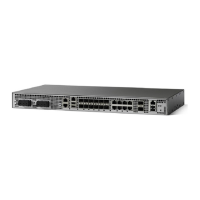You can configure a P2MP TE tunnel to use subpool or global-pool bandwidth. All sub-LSPs associated with
the P2MP TE tunnel are signaled with the same bandwidth amount and type. If the bandwidth amount or type
is changed, the P2MP tunnel headend router signals a new set of sub-LSPs with the new bandwidth parameters.
Bandwidth sharing is similar for P2MP TE sub-LSPs and P2P TE LSPs. When adding a new sub-LSP, the
P2MP-TE headend router determines whether it should share bandwidth with the other sub-LSPs. Two
sub-LSPs can share bandwidth as long as they are a “Transit Pair,” meaning the sub-LSPs share the output
interface, next-hop and output label.
LSPs and sub-LSPs cannot share bandwidth if they use different bandwidth pools. A change in bandwidth
requires reoptimizing P2P or P2MP TE tunnels, which may result in double-counting bandwidth on common
links.
Using FRR with Bandwidth Protection has the following requirements:
•
A backup tunnel is required to maintain the service level agreement while the new sub-LSP is created.
•
The PLR router selects the backup tunnel only if the tunnel has enough bandwidth capacity.
•
The backup tunnel might not signal bandwidth.
•
The PLR router decides the best backup path to protect the primary path, based on backup bandwidth
and class type.
How to Configure MPLS Point-to-Multipoint Traffic Engineering
Configuring the Headend Routers
The following steps explain how to configure the headend routers for multicast and MPLS point-to-multipoint
traffic engineering. As part of the configuration, you specify the tailend routers. You can also specify explicit
paths that the tunnel should use or request that the paths be dynamically created or have a combination of
dynamic and explicit paths.
Because the configuration of the P2MP TE tunnels is done at the headend router, this feature works best in
situations where the destinations do not change often. The P2MP feature does not support dynamic grafting
and pruning of sub-LSPs.
MPLS Traffic Engineering Path Calculation and Setup Configuration Guide, Cisco IOS XE Release 3S (Cisco ASR
920 Series)
21
MPLS Point-to-Multipoint Traffic Engineering
How to Configure MPLS Point-to-Multipoint Traffic Engineering
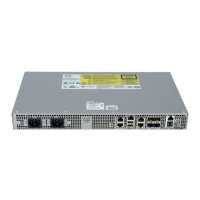
